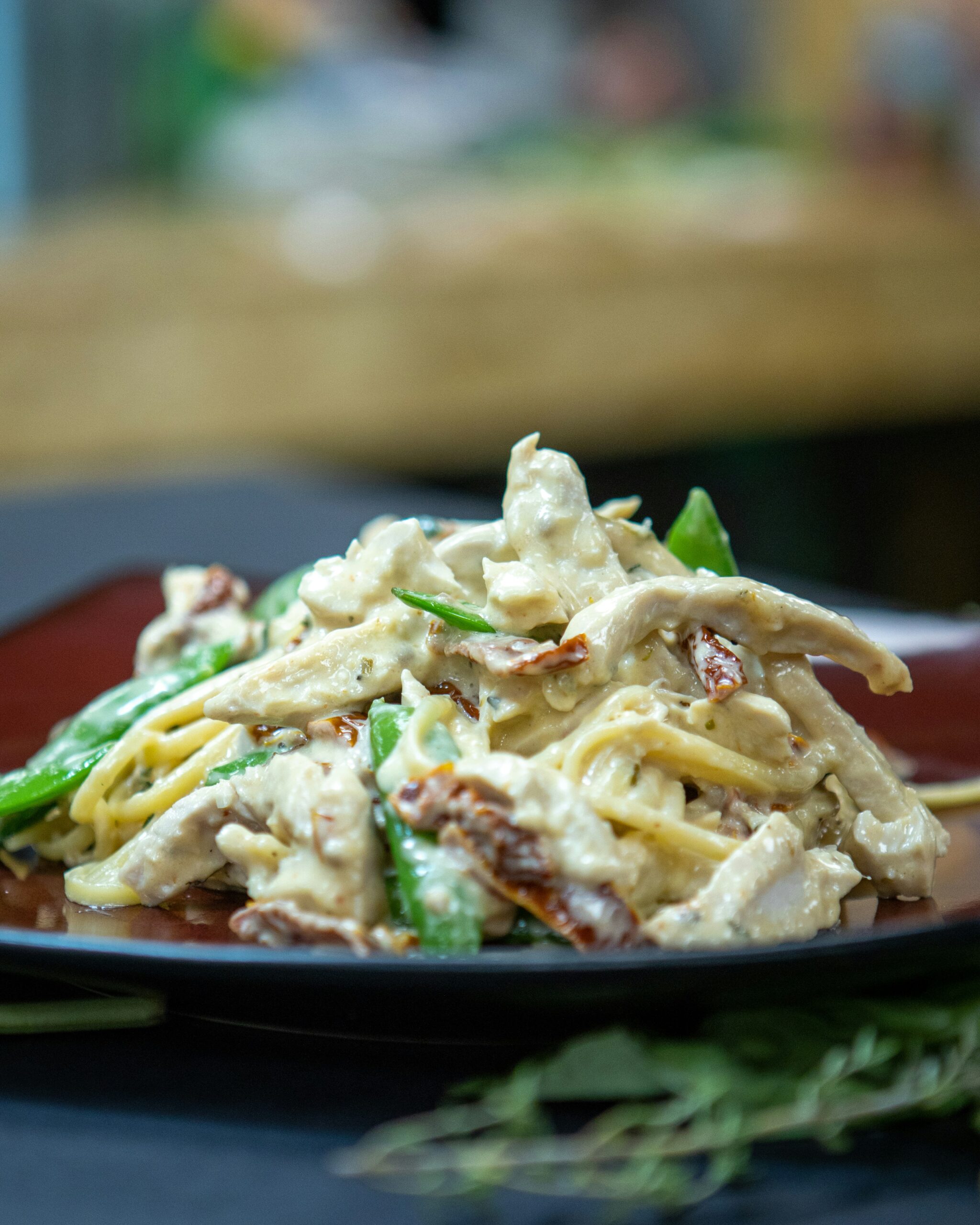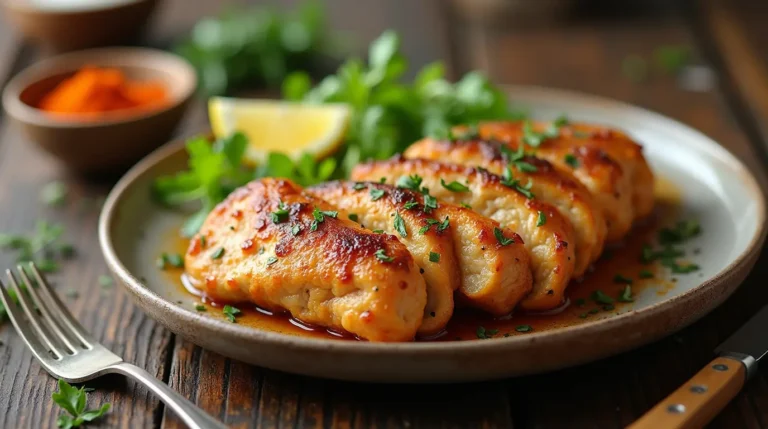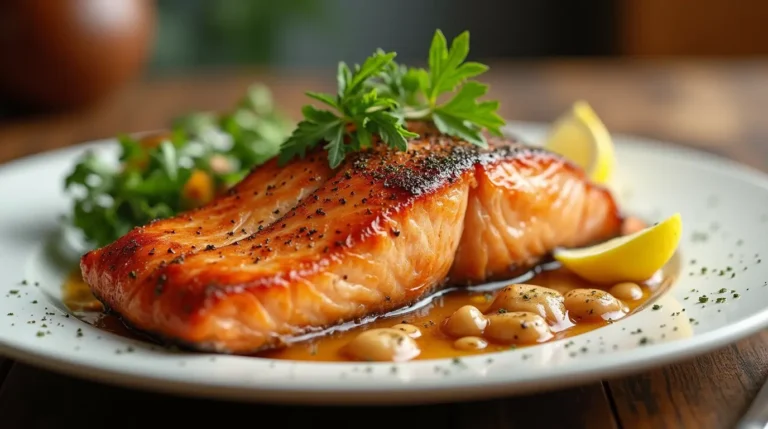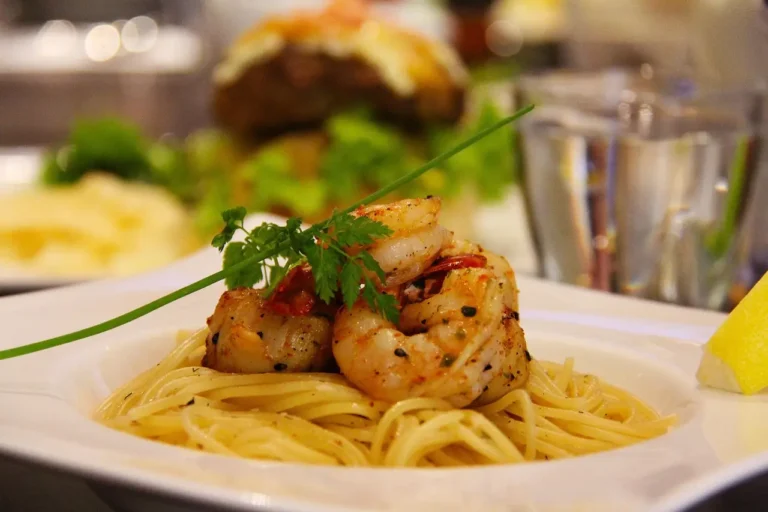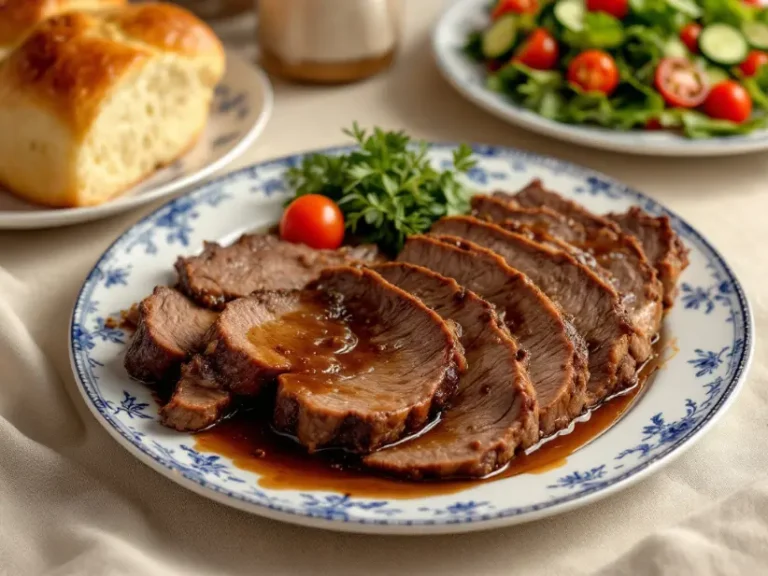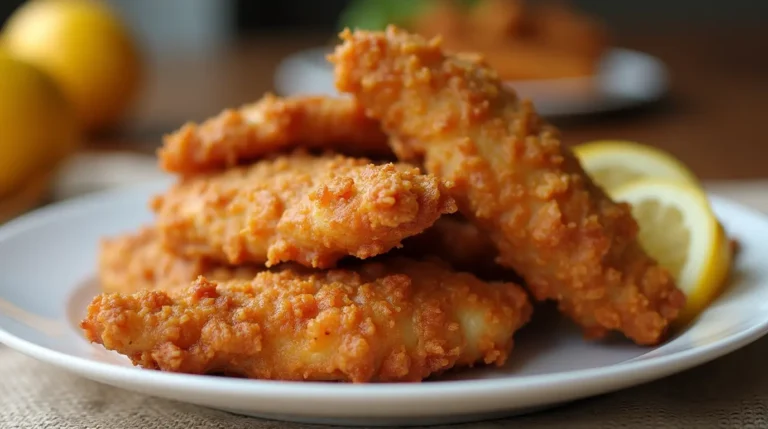Best Chicken and Pasta Meal: Unlocking Flavor and Convenience
Table of Contents
For many home cooks, there exists a shared frustration: the dreaded dry, overcooked chicken breasts that can transform a promising meal into a culinary disappointment. It is a common scenario—hours spent in the kitchen, only to be met with poultry that lacks moisture and flavor. However, the combination of chicken and pasta offers a transformative solution, promising a meal that is not only juicy and succulent but also easy to prepare. In this blog post, we will unlock the flavor and convenience of a delightful chicken and pasta dish that can elevate your weeknight dinners.
Drawing from years of experience in the culinary space, I have honed my skills in creating recipes that prioritize taste without excessive complexity. This chicken and pasta meal stands out as a model of efficiency and satisfaction. The marriage of well-seasoned chicken with perfectly cooked pasta creates a balanced dish that caters to both taste and nourishment. Each bite is an invitation to savor robust flavors, making it an ideal choice for those who aspire to enhance their cooking abilities.
Throughout this post, we will explore key aspects that contribute to the success of this dish. We will begin with tips on selecting the right type of chicken and pasta, ensuring that quality is at the forefront of your cooking experience. Next, we will delve into effective cooking techniques that guarantee tender chicken and al dente pasta every time. Furthermore, we will address common questions and concerns that may arise when preparing this meal, providing clarity and confidence to home cooks. Prepare to embark on a culinary journey that promises both flavor and ease in your kitchen endeavors.
Why This Chicken and Pasta Meal Works
The chicken and pasta meal stands out as an exemplary choice for those seeking flavor, convenience, and versatility. First and foremost, the dish utilizes affordable cuts of chicken, such as thighs or drumsticks, which are widely available and provide rich flavors without straining the budget. This makes it an accessible option for a range of households and ensures that families can enjoy delicious meals without excessive expenditure.
Additionally, the quick marination process enhances the tenderness and flavor of the chicken. A simple blend of herbs and spices can be combined with basic pantry staples like olive oil and vinegar to create a marinade that penetrates the meat rapidly. This not only saves time but also ensures that every bite is juicy and full of robust flavors. The result is a satisfying chicken experience that can elevate the overall taste profile of the meal.
Versatility is another key feature of this chicken and pasta meal. It can be easily tailored to suit various dietary preferences and occasions. For instance, one may opt for whole grain or gluten-free pasta options for healthier choices. Similarly, the addition of seasonal vegetables can enhance both nutritional value and flavor. Whether prepared for a quick weeknight dinner or as a centerpiece for a special gathering, the adaptability of the dish means it can cater to an array of tastes and occasions.
Moreover, the preparation of this meal is straightforward and efficient. The chicken can be cooked in tandem with the pasta, minimizing cooking time and allowing flavors to meld beautifully. This efficiency enhances the appeal of the chicken and pasta dish, making it an excellent solution for busy evenings or last-minute dinner plans. Overall, the seamless blend of affordability, flavor, and flexibility establishes this chicken and pasta meal as a winning choice for diverse dining experiences.
Understanding Chicken Cuts for Optimal Flavor
When preparing a chicken and pasta meal, selecting the right chicken cut is crucial to achieving a delicious and satisfying dish. Different parts of the chicken bring varying textures and flavors, which can significantly influence the final outcome. Among the various cuts, chicken thighs are often recommended for their inherent juiciness and flavor-rich profile. The higher fat content in thighs compared to chicken breasts prevents them from drying out during cooking, making them ideal for recipes where moisture retention is essential.
Best Cuts for Chicken and Pasta Meals
While chicken thighs offer a robust flavor, chicken breasts are another popular choice for those preferring a leaner option. Breasts can serve as a great base when marinated or cooked with rich sauces, ensuring they remain moist even in a pasta dish. Additionally, bone-in, skin-on chicken pieces provide both flavor and moisture; the bones enrich the dish, infusing it with a deeper taste. If seeking quicker cooking times, consider using chicken tenders, which are naturally tender and can hold up well in various sauces.
Practical Buying Tips
When purchasing chicken, consider several key factors to ensure you select high-quality products. First, look for chicken that is firm to the touch, with a pinkish hue and minimal visible liquid in the packaging. Background knowledge of the source can also add to your confidence; ideally, opt for free-range or organic options, which often yield better overall quality. Lastly, review the sell-by date to ensure freshness.
Substitutions for Dietary Needs
In instances where dietary preferences dictate a different protein source, consider alternatives like turkey, which can closely mimic chicken’s texture. For a vegetarian option, marinated tofu or tempeh can serve as satisfying replacements. Each of these substitutes can adapt well to typical chicken and pasta recipes, contributing to diverse and flavorful meals.
Selecting the Perfect Pasta
When crafting a chicken and pasta meal, the selection of pasta plays a crucial role in achieving the desired harmony of flavors and textures. The choice of pasta shape can significantly influence the overall experience of the dish. For a classic combination, consider using fettuccine or linguine, which are flat and wide, allowing them to embrace creamy sauces effectively. Alternatively, penne or rigatoni, with their hollow shapes, capture chunks of chicken and sauce within, ensuring each bite is bursting with flavor.
Different pasta textures also contribute to the meal’s success. Smooth pasta, such as spaghetti, pairs excellently with lighter sauces, while textured varieties like fusilli hold onto thicker and chunkier sauces beautifully. Keep in mind that the size of the pasta can impact cooking time; larger shapes might require a few extra minutes to reach al dente perfection. It is essential to follow the cooking instructions on the package, typically ranging from 8 to 12 minutes depending on the variety chosen.
When pairing the pasta with sauce, consider the overall balance of flavors. For a rich and creamy dish, a wider pasta may enhance the creaminess, whereas a light olive oil or garlic sauce complements thinner varieties perfectly. To serve a balanced meal, aim for a proportion of chicken to pasta that is aesthetically pleasing and satisfying.
For those with dietary restrictions, there are numerous alternatives available. Whole wheat pasta offers a healthful option with added fiber, while gluten-free pasta made from rice or corn can cater to gluten sensitivities. Additionally, legume-based pasta made from chickpeas or lentils adds a protein punch and unique flavor, making it an appealing choice for a variety of dietary preferences.
Flavorful Marinades and Sauces
In the culinary world, marinades and sauces are essential for infusing flavor into chicken dishes, particularly when paired with pasta. They not only enhance the taste but also tenderize the meat, making it more succulent and enjoyable. Marinades typically consist of three main components: acid, fat, and seasonings, which together create a harmonious flavor profile. Common acids include vinegar, citrus juice, or yogurt, while oils, such as olive oil, act as the fat. The introduction of herbs and spices enhances the complexity of flavors, making the dish appealing to the palate.
One popular marinade for chicken and pasta is the Mediterranean Herb Marinade, which includes olive oil, lemon juice, garlic, oregano, and thyme. This combination yields a tangy and aromatic flavor that complements pasta well. Another excellent option is a Honey Soy Marinade, made with soy sauce, honey, ginger, and garlic, providing a sweet and savory profile that pairs beautifully with noodle dishes. For those seeking a more robust flavor, a Spicy Chipotle Marinade consisting of chipotle peppers in adobo sauce, cumin, lime juice, and honey can add a delightful kick to the chicken.
To apply the marinades, it is crucial to coat the chicken evenly. Placing the chicken in a resealable plastic bag or a shallow dish allows for thorough coverage. The importance of marinating time cannot be overstated; typically, a duration of 30 minutes to 2 hours is recommended, depending on the marinade’s acidity. This process allows the flavors to penetrate the meat effectively, resulting in a more flavorful and satisfying meal. Additionally, it is advisable not to marinate chicken for too long, particularly with acidic marinades, as this can lead to a mushy texture.
In conclusion, the use of flavorful marinades and sauces is a vital step in preparing chicken dishes that pair with pasta. By selecting the right ingredients and allowing ample time for marination, the overall taste of the meal can be significantly enhanced, leading to a delightful culinary experience.
Cooking Techniques for Perfect Chicken and Pasta
Achieving perfectly cooked chicken and pasta requires an understanding of various cooking techniques and their appropriate applications. Each method brings its own set of benefits that can enhance the overall texture and flavor of the dish.
Sautéing is a popular technique for cooking chicken. When you sauté chicken breasts, it is essential to use medium-high heat. This high temperature allows for a beautiful sear, locking in moisture and flavor. Seasoning the chicken before cooking enhances its taste. Consider marinating the chicken beforehand for added depth. For optimal results, use a heavy skillet and ensure the pan is hot before adding oil and then the chicken.
On the other hand, boiling is a straightforward method for cooking pasta. This technique works best for dried pasta, which should be added to a pot of rapidly boiling, salted water. The salinity of the water is crucial as it allows the pasta to absorb flavor during the cooking process. It is fundamental to follow the package instructions regarding cooking time to achieve an al dente texture, which means the pasta should still be firm when bitten.
Baking is another excellent technique, particularly when combined with sauce and cheese for dishes like baked pasta. When preparing to bake chicken, consider using a marinade or a dry rub to infuse flavor. The oven should be preheated to the appropriate temperature, usually around 375°F (190°C), ensuring even cooking. Utilizing a meat thermometer can help guarantee the chicken reaches an internal temperature of 165°F (74°C), confirming it is fully cooked.
Timing and temperature adjustments are critical when transitioning between these techniques. For instance, consider starting with sautéing the chicken at a higher temperature and then finish it by baking to retain moisture. Implementing these cooking techniques and tips can transform a simple chicken and pasta meal into a culinary delight, maximizing flavor while ensuring both components are cooked to perfection.
Serving Suggestions and Pairings
Enhancing the experience of a chicken and pasta meal goes beyond the dish itself; it involves thoughtful serving suggestions and complementary pairings that elevate flavor and presentation. To create a well-rounded meal that tantalizes the taste buds, consider various sides, garnishes, and beverages that harmonize beautifully with your main dish.
For side dishes, a fresh garden salad can provide an excellent contrast to the richness of chicken and pasta. A simple mix of greens, cherry tomatoes, and a light vinaigrette is refreshing and adds a burst of color to the plate. Additionally, roasted vegetables, such as asparagus or bell peppers, offer not only vibrant color but also an earthy warmth that complements the meal. For those craving carbohydrates, garlic bread or a side of steamed rice can enhance the overall dining experience and satisfy hunger.
When selecting garnishes, fresh herbs play a pivotal role. Chopped parsley or basil can be sprinkled atop the chicken and pasta just before serving, adding both flavor and visual appeal. A sprinkle of grated Parmesan or a dash of chili flakes can bring an exciting twist to the dish, allowing guests to customize their portions according to taste preferences.
Beverage pairings also significantly enhance the enjoyment of your meal. A crisp white wine, such as a Chardonnay or Sauvignon Blanc, typically offers a refreshing and fruity composition that elevates the flavors of the chicken, while sparkling water with a lime wedge provides a non-alcoholic option with a hint of zest. For dessert, opting for a light sorbet or a fruit tart can cleanse the palate, leaving a pleasant aftertaste to conclude the meal.
Finally, paying attention to presentation can greatly enhance the meal. Serving chicken and pasta in stylish bowls or on elegant plates, along with artful arrangements of the accompanying side dishes, can create an inviting atmosphere that entices diners. Utilizing vibrant colors and textures not only makes the food more appealing but also showcases the thoughtfulness behind meal preparation.
FAQs about Chicken and Pasta Meals
When exploring the world of chicken and pasta meals, it’s natural to have questions regarding preparation, storage, and customization. Below, we address some frequently asked questions to ensure your cooking experience is smooth and enjoyable.
How should I store leftover chicken and pasta?
Leftover chicken and pasta meals can be stored in the refrigerator for up to three to four days. It’s best to keep them in an airtight container to prevent moisture loss and the absorption of other odors. If you wish to prolong the shelf life, consider freezing the meal. In this case, split the dish into meal-sized portions before placing them in freezer-safe containers. Properly stored, chicken and pasta meals can last three months in the freezer. Ensure to label the containers with the date for easy reference.
What is the best way to reheat chicken and pasta?
Reheating chicken and pasta requires some care to retain the integrity of the dish. The ideal method is to use the oven or microwave. If using the oven, preheat it to 350°F (175°C), place the meal in an oven-safe dish, and cover it with aluminum foil to keep the moisture intact. Heating for about 15-20 minutes should suffice. When using a microwave, transfer the meal to a microwave-safe bowl, cover it with a lid or damp paper towel, and heat in short intervals, stirring in between, until heated through.
How can I modify chicken and pasta meals for dietary restrictions?
Adapting chicken and pasta recipes to suit various dietary needs is easily achievable. For gluten-free diets, opt for gluten-free pasta alternatives made from rice, quinoa, or legumes. For those avoiding dairy, substitute creamy sauces with plant-based options, such as almond or cashew cream. Vegans can replace chicken with protein-rich alternatives like tofu or chickpeas. Ensuring that ingredients align with your dietary preferences allows everyone to enjoy a delicious chicken and pasta meal.
What should I do if my chicken turns out dry?
If your chicken appears dry, this may be a result of overcooking. To salvage it, consider adding a flavorful sauce or broth before serving. If preferred, serve the chicken alongside the pasta, drenching both in sauce to add moisture and flavor. Additionally, using skin-on pieces can help retain moisture during cooking, providing a more succulent result.
Conclusion
In conclusion, preparing a chicken and pasta meal presents a delightful combination of flavor, nutrition, and convenience that appeals to a wide variety of palates. The versatility of chicken allows for easy adaptation with numerous pasta options and an array of sauces, making it an ideal choice for a quick weeknight dinner or a more elaborate meal for special occasions. By experimenting with different ingredients, spices, and cooking techniques, home cooks can unlock a myriad of taste sensations while ensuring healthy options for themselves and their families.
Through this blog post, we’ve highlighted the numerous advantages of crafting a chicken and pasta dish. From its time-efficient preparation to its capacity to cater to various dietary preferences, it stands as a favorable choice for all home chefs. We encourage readers to embrace the culinary potential of chicken and pasta by trying out the recipes provided. Don’t hesitate to adjust the flavors, swap ingredients, or incorporate personal touches to make it uniquely yours.
Your feedback and shared experiences are invaluable in creating a vibrant community around home cooking. We invite you to engage with us in the comments section, where you can share your thoughts on the recipes you’ve tried or offer additional tips and tricks. Your contributions will not only enrich your own cooking journey but will also inspire fellow cooking enthusiasts. Let us cultivate a space where creativity and culinary passion can flourish together.
Did You Try Our Recipe ?
help Recipes
Meat Feast – Where Meat Becomes Art!

